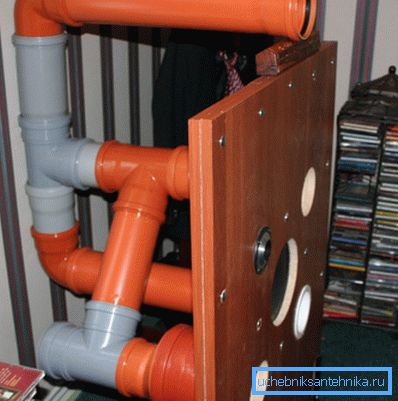Feeder for chickens from the sewer pipe and other useful
Plastic sewer pipes are an excellent material for arranging a system for discharging dirty water from an apartment or a country house: in addition to its main purpose, these parts can be used to make many other useful and beautiful things. If you have sufficient skills for doing your own hands and an irrepressible desire, you can even make a moonshine still out of a sewer pipe.
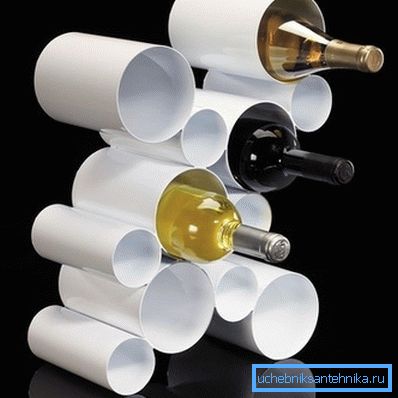
But this article provides instructions for making more practical crafts.
Products from the remains of PVC pipes
Feeder for domestic animals
One of the ways to use polymeric sewer pipes of large diameter is the arrangement of feeders for chickens.
To do this, you will need the following tools and materials:
- file or hacksaw;
- two caps for closing the ends;
- the sewer pipe itself (the length of the segment must be at least 1 meter);
- tee for sewage.
It is necessary to cut the pipe into three parts - 70, 20 and 10 centimeters long.
Then work is performed according to the following scheme:
- A 20-centimeter piece is put on the cap, which will serve as the basis for the future trough.
- A tee is docked to the upper part, and then a 70-centimeter pipe, which is also closed with a plug.
- The remaining 10 cm part is inserted into the side opening of the tee. Through it and will be feeding.
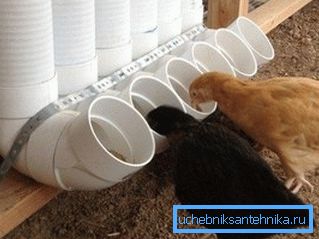
The resulting feeder allows you to economize on food, since chickens will not be able to scatter grain on the ground. Capacity will allow to feed a sufficiently large number of birds (more than 20 pieces).
Tip! To prevent the structure from tipping over, it should be attached to the wall or mesh fence of the chicken coop with clamps.
Filter
Another useful thing that is useful in any household is a cyclone from sewer pipes. Such a device allows you to clean the air sucked with a vacuum cleaner from heavy debris and other fractions.
Often used for cleaning garages and workshops. Using this design, you can use a vacuum cleaner without a standard filter or bag for collecting debris without fear of damaging the motor impeller.
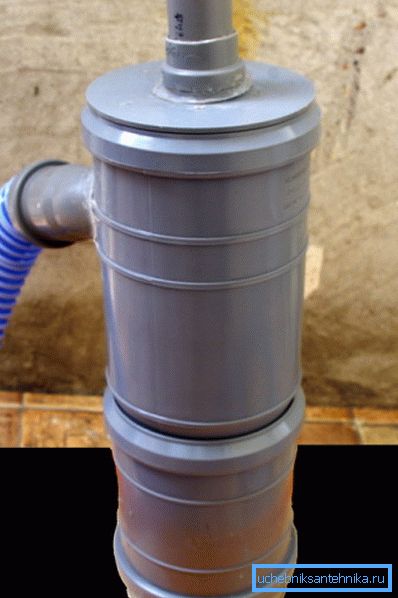
To make a cyclone, you will need:
- a vacuum cleaner;
- sewer pipes with a diameter of 100 and 40 mm;
- a thin sheet of metal (about 0.5 mm thick);
- two plastic containers of 2.5 liters;
- one plastic bottle with a capacity of 5-6 liters;
- various power tools;
- welding electrodes (steel wire), glue, adhesive tape, marker.
The manufacturing process is as follows:
- A piece with a length of 500 mm is cut from a pipe with a diameter of 100 mm, which will serve as the body of the future cyclone.
- From a smaller plastic part is cut one piece with a length of 100 mm, which will serve as a nozzle for connecting a vacuum cleaner. The second part - 150 mm long - is required for the suction hose.
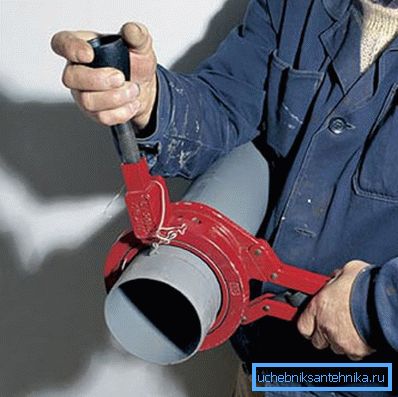
- Three circles are cut out of sheet metal, the outer diameter of which is equal to 98 mm with a hole in the center of 41 mm in size. Prepared plastic pipes can be used as patterns.
- Then an incision is made in each of the resulting rings, after which all the metal parts are riveted into one spiral. It is put on a 40 mm pipe and fixed with hot melt glue.
- The resulting design is placed in the case.. If necessary, the dimensions of the spiral are adjusted to the internal diameter of the body with the help of scissors for metal.
- A hole is made in the upper side part of the housing for the suction inlet. It should be done as carefully as possible so that after gluing the connection is sealed.
- A cap is cut out of the 5-liter bottle, a part of the threaded neck is removed, and then installed on the top of the future cyclone. All this is also fixed with hot melt glue.
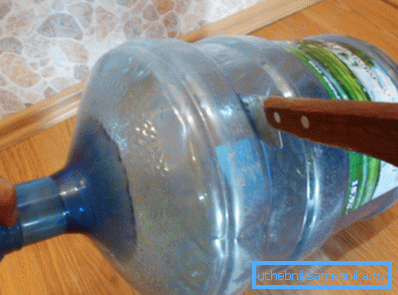
- Then we make a trash bin.. To do this, a bottom is cut from a single 2.5-liter bottle, then two stoppers are glued together and a hole is cut into them (this will be a coupling). The cut bottle is glued to the bottom of the cyclone, and the whole bottle, connected with the help of a “clutch”, will be a waste container.
- Plastic containers must be reinforced with electrodes or steel wire. They are bent into a ring and attached to the bottle with construction adhesive tape. Otherwise the bottles will crumple after switching on the cyclone.
- The last stage - connecting the vacuum cleaner. The standard corrugated hose fits perfectly with a 40 mm sewer pipe.
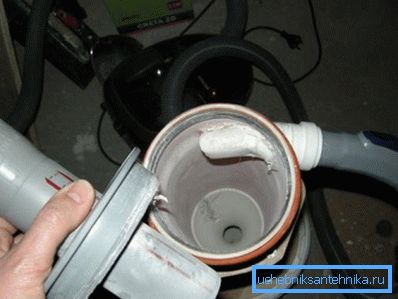
Note! The capacity of corrugated pipes of smaller diameter is not enough for the proper functioning of the cyclone. In addition, such a design during operation will emit a strong whistle and noise.
Ventilation system
Often the parts that were used for the installation of the drainage system are used to arrange ventilation.
Vent-channels from sewer pipes are an excellent solution, because the relatively low price of the latter allows significant savings on the purchase of additional building materials. The surface of such pipes is very smooth, which has a positive effect on the performance of the finished system.
When self-installing this system in a private house should follow these rules:
- Air ducts are laid strictly vertically.
- Each room must be equipped with an individual ventilation duct.
- Allowed to combine into a single exhaust system of the following rooms: kitchen, bath, toilet, bathroom (but only in the case when they are located nearby, and not at opposite ends of the house).
- Turns and transitions between vertical and horizontal sections should be smooth (turning radius of not more than 100 mm).
- With the help of PVC pipes it is possible to lay ventilation ducts on the outer wall of the house. In this case, the pipes need to be further warmed.

Hydroponics
Hydroponic installation from sewer pipes is very popular among summer residents and owners of country houses. It allows you to grow various crops without the use of soil. All plant nutrients are obtained from water, which constantly washes the roots of plants.

Hydroponic system is a container in which plastic containers with plants are placed. Instead of soil, fine expanded clay or gravel is used. The main task is to ensure the continuous circulation of water with fertilizers.
The advantages of such a system are obvious:
- there is no need for regular watering of plants;
- the consumption of water used for growing plants is reduced several times;
- grown crops do not dry out;
- such a system allows you to protect plants from pests and diseases;
- you will not smear, processing crops planted in the soil.
The production scheme of hydroponic installation is as follows:
- Holes are drilled in the pipes, the diameter of which corresponds to the size of the used plastic containers for expanded clay. You can use nozzles on the drill, designed for drywall.
- In order for the water level to reach the bottom of the containers, the drain hole in the end caps must be made closer to the center of the pipe.
- Water supply is carried out using thin rubber tubes.
- You can use the serpentine structure, when the sewer pipes are located at different levels, and the water that is fed from above, through the drain system is gradually drained to the lower "floors".

Conclusion
The amount of material makes it impossible to tell you about many other useful things. For example, a phase inverter from a sewer pipe has proven itself well, making it possible to construct a high-quality acoustic system at minimal cost.
About this, as well as many other things, you can find out from the video in this article.
